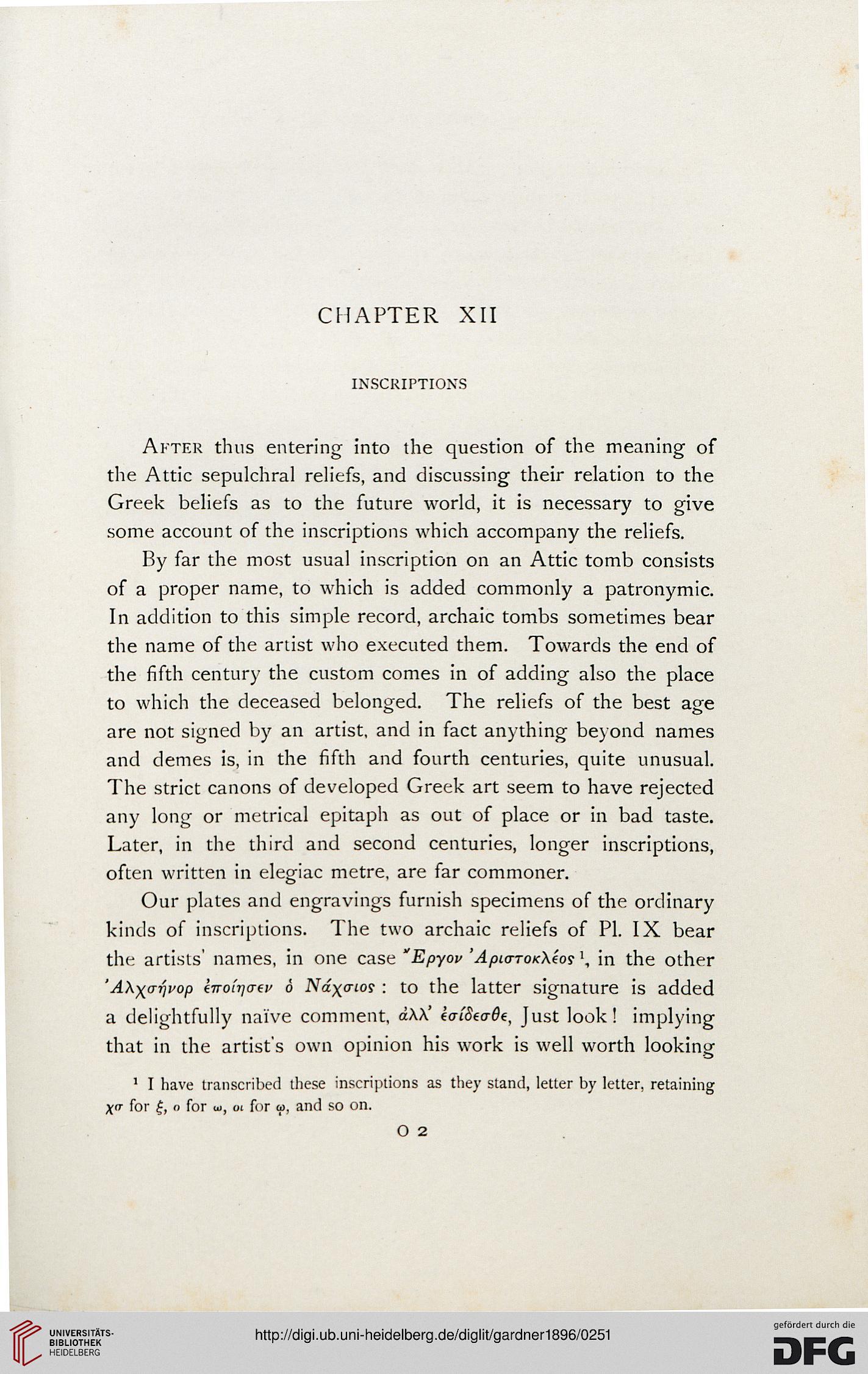CHAPTER
XII
inscriptions
After thus entering into the question of the meaning of
the Attic sepulchral reliefs, and discussing their relation to the
Greek beliefs as to the future world, it is necessary to give
some account of the inscriptions which accompany the reliefs.
By far the most usual inscription on an Attic tomb consists
of a proper name, to which is added commonly a patronymic.
In addition to this simple record, archaic tombs sometimes bear
the name of the artist who executed them. Towards the end of
the fifth century the custom comes in of adding also the place
to which the deceased belonged. The reliefs of the best age
are not signed by an artist, and in fact anything beyond names
and denies is, in the fifth and fourth centuries, quite unusual.
The strict canons of developed Greek art seem to have rejected
any long or metrical epitaph as out of place or in bad taste.
Later, in the third and second centuries, longer inscriptions,
often written in elegiac metre, are far commoner.
Our plates and engravings furnish specimens of the ordinary
kinds of inscriptions. The two archaic reliefs of PI. IX bear
the artists' names, in one case "Epyov 'ApiaroicXeos \ in the other
'AXxcrijyop knon-jad' 6 Ndx<rios : to the latter signature is added
a delightfully naive comment, dXX' (aiSeade, Just look! implying
that in the artist's own opinion his work is well worth looking
1 I have transcribed these inscriptions as they stand, letter by letter, retaining
X<r for £, o for m, 01 for a>, and so on.
O 2
XII
inscriptions
After thus entering into the question of the meaning of
the Attic sepulchral reliefs, and discussing their relation to the
Greek beliefs as to the future world, it is necessary to give
some account of the inscriptions which accompany the reliefs.
By far the most usual inscription on an Attic tomb consists
of a proper name, to which is added commonly a patronymic.
In addition to this simple record, archaic tombs sometimes bear
the name of the artist who executed them. Towards the end of
the fifth century the custom comes in of adding also the place
to which the deceased belonged. The reliefs of the best age
are not signed by an artist, and in fact anything beyond names
and denies is, in the fifth and fourth centuries, quite unusual.
The strict canons of developed Greek art seem to have rejected
any long or metrical epitaph as out of place or in bad taste.
Later, in the third and second centuries, longer inscriptions,
often written in elegiac metre, are far commoner.
Our plates and engravings furnish specimens of the ordinary
kinds of inscriptions. The two archaic reliefs of PI. IX bear
the artists' names, in one case "Epyov 'ApiaroicXeos \ in the other
'AXxcrijyop knon-jad' 6 Ndx<rios : to the latter signature is added
a delightfully naive comment, dXX' (aiSeade, Just look! implying
that in the artist's own opinion his work is well worth looking
1 I have transcribed these inscriptions as they stand, letter by letter, retaining
X<r for £, o for m, 01 for a>, and so on.
O 2




